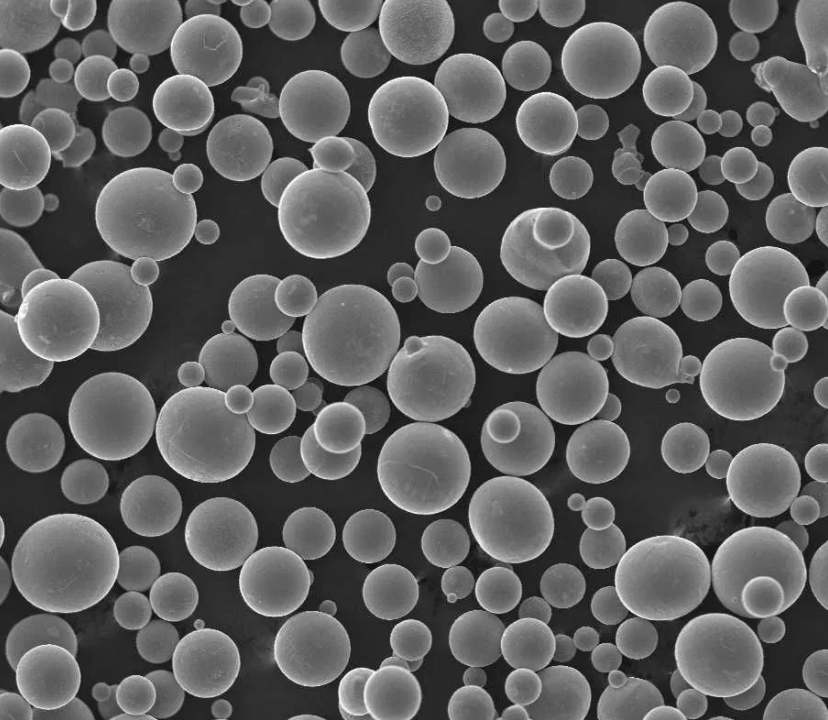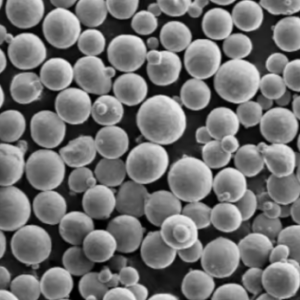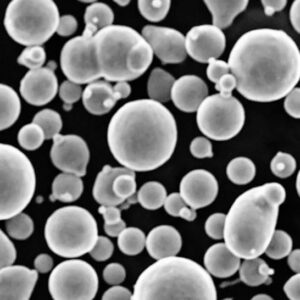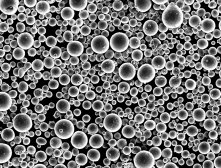Einführung
Hallo zusammen! Hast du dich schon mal gefragt, wie diese wahnsinnig detaillierten Metallteile in der Luft- und Raumfahrt, der Automobilindustrie und der Medizintechnik hergestellt werden? Willkommen in der Welt der Laser-Additive Fertigung (LAM). Der Begriff ist etwas langatmig, aber im Grunde ist es wie 3D-Druck auf Steroiden für Metallkomponenten. In diesem Artikel befassen wir uns eingehend mit allen Aspekten des LAM - von den verwendeten Metallpulvern über die Besonderheiten des Verfahrens bis hin zu den Vor- und Nachteilen. Schnappen Sie sich also eine Tasse Kaffee, lehnen Sie sich zurück und lassen Sie uns das faszinierende Reich des Laser Additive Manufacturing erkunden.
Überblick über die Laser Additive Manufacturing (LAM)
Laser Additive Manufacturing ist eine Art von 3D-Drucktechnologie, bei der Metallpulver mit Hilfe eines Lasers Schicht für Schicht verschmolzen wird, um komplexe Geometrien zu schaffen, die mit herkömmlichen Fertigungsmethoden unmöglich wären. Betrachten Sie es als Bildhauerei mit Licht - wo Präzision auf Kreativität trifft. LAM bietet eine Fülle von Vorteilen, z. B. weniger Materialabfall, die Möglichkeit, kundenspezifische und komplexe Teile herzustellen, und kürzere Produktionszeiten als bei herkömmlichen Verfahren.
Wichtige Details
- Technologie: Verwendet Hochleistungslaser zum Schmelzen und Verschmelzen von Metallpulvern.
- Anwendungen: Luft- und Raumfahrt, Automobilbau, medizinische Implantate, Werkzeugbau und mehr.
- Vorteile: Hohe Präzision, weniger Ausschuss, schnelles Prototyping und individuelle Anpassung.

Arten und Zusammensetzung von Metallpulvern in LAM
Die Wahl des richtigen Metallpulvers ist entscheidend für den Erfolg von LAM. Die Art des Metallpulvers beeinflusst die mechanischen Eigenschaften, die Oberflächenbeschaffenheit und die Leistung des fertigen Teils. Sehen wir uns einige der gängigen Metallpulver an, die bei LAM verwendet werden.
| Metall-Pulver | Zusammensetzung | Eigenschaften | Merkmale |
|---|---|---|---|
| Rostfreier Stahl 316L | Eisen, Chrom, Nickel, Molybdän | Korrosionsbeständig, langlebig | Ideal für medizinische und maritime Anwendungen |
| Inconel 625 | Nickel, Chrom, Molybdän, Niob | Hohe Festigkeit, korrosionsbeständig | Einsatz in der Luft- und Raumfahrt sowie in der chemischen Verarbeitung |
| Titan Ti-6Al-4V | Titan, Aluminium, Vanadium | Leichtes Gewicht, hohe Festigkeit | Häufig in der Luft- und Raumfahrt und in der Biomedizin |
| Aluminium AlSi10Mg | Aluminium, Silizium, Magnesium | Leichtes Gewicht, gute thermische Eigenschaften | Geeignet für Automobil- und Luft- und Raumfahrtkomponenten |
| Kobalt-Chrom CoCr | Kobalt, Chrom, Molybdän | Hohe Verschleißfestigkeit, biokompatibel | Perfekt für zahnmedizinische und orthopädische Implantate |
| Werkzeugstahl H13 | Eisen, Chrom, Molybdän, Vanadium | Hohe Härte, hitzebeständig | Verwendung für Werkzeuge und Formen |
| Kupfer Cu | Reines Kupfer | Ausgezeichnete thermische und elektrische Leitfähigkeit | Ideal für Wärmetauscher und elektrische Komponenten |
| Nickellegierung 718 | Nickel, Chrom, Eisen, Molybdän, Niob | Hohe Festigkeit, hitzebeständig | Häufig in Triebwerken für die Luft- und Raumfahrt und bei der Stromerzeugung |
| Martensitaushärtender Stahl | Eisen, Nickel, Kobalt, Molybdän, Titan | Ultrahohe Festigkeit, Zähigkeit | Einsatz im Werkzeugbau und bei Hochleistungsanwendungen |
| Wolfram W | Reines Wolfram | Hohe Dichte, hitzebeständig | Einsatz in Hochtemperaturumgebungen und zur Strahlenabschirmung |
Anwendungen der additiven Laserfertigung
LAM hat zahlreiche Branchen revolutioniert, indem es die Herstellung komplexer und leistungsstarker Teile ermöglicht. Hier ein genauerer Blick darauf, wo LAM Wellen schlägt.
| Industrie | Anmeldung | Beispiele |
|---|---|---|
| Luft- und Raumfahrt | Leichte Strukturkomponenten | Turbinenschaufeln, Kraftstoffdüsen |
| Automobilindustrie | Motorenteile, kundenspezifische Prototypen | Kolben, Saugrohre |
| Medizinische | Maßgeschneiderte Implantate, chirurgische Werkzeuge | Hüftimplantate, Zahnkronen |
| Werkzeugbau | Langlebige Formen, Schneidwerkzeuge | Spritzgießformen, Druckgießformen |
| Energie | Hochleistungsteile für die Stromerzeugung | Turbinenkomponenten, Wärmetauscher |
| Schmuck | Aufwendige Designs, Sonderanfertigungen | Ringe, Armbänder |
| Konsumgüter | Anpassbare Produkte | Brillenfassungen, modische Accessoires |
Spezifikationen, Größen und Normen in LAM
Wenn es um LAM geht, sind Präzision und die Einhaltung von Normen von größter Bedeutung. Für die verschiedenen Metallpulver gelten unterschiedliche Spezifikationen und Normen, um Qualität und Leistung zu gewährleisten.
| Metall-Pulver | Spezifikationen | Größen (μm) | Normen |
|---|---|---|---|
| Rostfreier Stahl 316L | ASTM A240 | 15-45 | ISO 5832-1 |
| Inconel 625 | ASTM B443 | 15-53 | AMS 5666 |
| Titan Ti-6Al-4V | ASTM F1472 | 20-60 | ISO 5832-3 |
| Aluminium AlSi10Mg | ASTM F3318 | 10-45 | ISO 3522 |
| Kobalt-Chrom CoCr | ASTM F75 | 15-50 | ISO 5832-4 |
| Werkzeugstahl H13 | ASTM A681 | 15-45 | DIN 1.2344 |
| Kupfer Cu | ASTM B170 | 15-63 | ASTM B216 |
| Nickellegierung 718 | ASTM B637 | 15-53 | AMS 5662 |
| Martensitaushärtender Stahl | ASTM A538 | 20-63 | AMS 6514 |
| Wolfram W | ASTM B777 | 15-45 | ASTM B781 |
Lieferanten und Preisangaben
Um sich auf dem Markt für LAM-Metallpulver zurechtzufinden, müssen Sie die wichtigsten Anbieter und deren Preisstrukturen kennen. Im Folgenden finden Sie eine Übersicht über einige führende Anbieter und die Preise, die Sie erwarten können.
| Anbieter | Metall-Pulver | Preisspanne (pro kg) | Anmerkungen |
|---|---|---|---|
| EOS GmbH | Edelstahl 316L, Titan Ti-6Al-4V | $150 – $300 | Führender Anbieter von LAM, hohe Qualität |
| 3D-Systeme | Inconel 625, Aluminium AlSi10Mg | $200 – $400 | Umfassendes Materialportfolio |
| Zimmerer-Zusatzstoff | Kobalt-Chrom CoCr, Werkzeugstahl H13 | $250 – $500 | Kundenspezifische Pulverlösungen |
| Höganäs AB | Kupfer-Cu, martensitaushärtender Stahl | $100 – $250 | Breites Spektrum an Metallpulvern |
| GKN-Zusatzstoff | Nickellegierung 718, Wolfram W | $300 – $600 | Hochwertige Materialien |
Vergleich der Vor- und Nachteile von LAM
Wenn Sie LAM für Ihre Produktionsanforderungen in Betracht ziehen, müssen Sie die Vor- und Nachteile abwägen. Hier ist eine ausgewogene Sichtweise.
| Aspekt | Vorteile | Benachteiligungen |
|---|---|---|
| Flexibilität bei der Gestaltung | Erstellung komplexer Geometrien, Anpassung | Konstruktionsbedingte Einschränkungen durch Stützstrukturen |
| Materialeffizienz | Weniger Abfall, weniger Materialverbrauch | Höhere Kosten von Metallpulvern |
| Geschwindigkeit | Schnelles Prototyping, schnellere Produktion | Langsamer für die Großserienproduktion |
| Mechanische Eigenschaften | Hohe Festigkeit, maßgeschneiderte Eigenschaften | Potenzial für Eigenspannungen |
| Kosten | Geringere Werkzeugkosten, kosteneffizient für kleine Chargen | Hohe Anfangsinvestitionen in die Ausrüstung |
Wie LAM im Vergleich zur traditionellen Fertigung abschneidet
Wie schneidet LAM also im Vergleich zu herkömmlichen Fertigungsmethoden ab? Schauen wir uns das mal an.
| Parameter | LAM | Traditionelle Fertigung |
|---|---|---|
| Einrichtungszeit | Kürzere, schnelle Einrichtung | Längerer, umfangreicher Werkzeugbau |
| Komplexität | Einfache Handhabung komplexer Designs | Begrenzt durch Bearbeitungsmöglichkeiten |
| Materialabfälle | Minimaler, effizienter Einsatz | Erheblich mehr Abfall |
| Produktionsvolumen | Am besten für kleine bis mittlere Volumen | Wirtschaftlich bei hohen Stückzahlen |
| Personalisierung | Hoch, leicht anpassbar | Niedrig, teuer für Anpassungen |

FAQ
F: Was ist Laser-Additive Fertigung (LAM)?
A: LAM ist eine Art des 3D-Drucks, bei dem Laser verwendet werden, um Metallpulver Schicht für Schicht zu schmelzen und zu verschmelzen, wodurch sehr detaillierte und komplexe Teile entstehen.
F: Welche Metalle können in LAM verwendet werden?
A: Zu den gängigen Metallen gehören Edelstahl, Inconel, Titan, Aluminium, Kobalt-Chrom, Werkzeugstahl, Kupfer, Nickellegierungen, Maraging-Stahl und Wolfram.
F: Was sind die Vorteile von LAM?
A: Zu den wichtigsten Vorteilen gehören hohe Präzision, weniger Materialabfall, schnelles Prototyping und die Möglichkeit, komplexe und kundenspezifische Teile zu fertigen.
F: Was ist der Unterschied zwischen LAM und der traditionellen Fertigung?
A: LAM bietet kürzere Rüstzeiten, eine bessere Handhabung komplexer Designs, minimalen Materialabfall und einen hohen Grad an individueller Anpassung, kann aber für die Großserienproduktion langsamer und teurer sein.
F: Welche Branchen verwenden LAM?
A: LAM wird in der Luft- und Raumfahrt, im Automobilbau, in der Medizintechnik, im Werkzeugbau, im Energiesektor, in der Schmuckindustrie und in der Konsumgüterindustrie eingesetzt.
F: Wie viel kosten Metallpulver für LAM?
A: Die Preise reichen von $100 bis $600 pro Kilogramm, je nach Metallart und Lieferant.
F: Welches sind die üblichen Normen für LAM-Metallpulver?
A: Zu den Normen gehören ASTM- und ISO-Spezifikationen für jeden Metalltyp, die Qualität und Leistung gewährleisten.
F: Kann LAM die Produktion in großem Maßstab bewältigen?
A: LAM eignet sich zwar hervorragend für kleine bis mittlere Stückzahlen, kann aber im Vergleich zu herkömmlichen Verfahren langsamer und weniger kosteneffizient für die Produktion großer Mengen sein.














